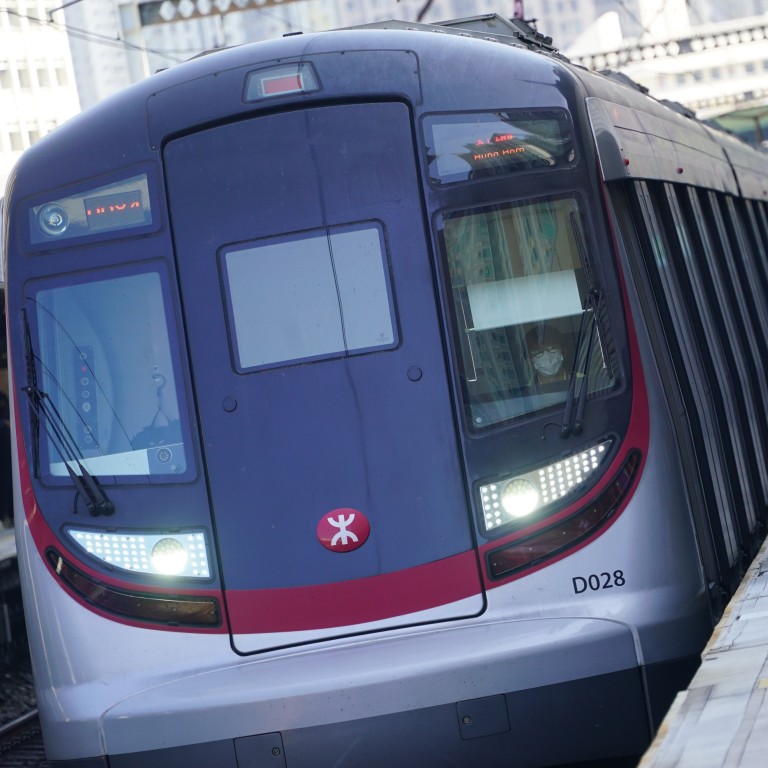
Hong Kong rail giant MTR Corporation posts 77 per cent rise in profits to HK$4.73 billion in first half of 2022, with property cushioning impact of Covid-19 fifth wave
- Rail firm registers profits of HK$4.73 billion over first half of 2022, attributed to property developments such as Lohas Park
- Havoc wreaked by fifth wave of pandemic caused dramatic drop in ridership in first half of year
The rail giant attributed the strong showing, up from the HK$2.67 billion in profit recorded during the same period last year, to property development yields of HK$7.7 billion, mainly derived from projects such as Lohas Park in Tseung Kwan O. But that earning was partly undone by a one-off loss of HK$2.37 billion from a drop in the valuation of investment properties during the same period.
“The fifth wave of the pandemic in the first half of this year posed great challenges to Hong Kong. Despite the challenges, the corporation which has been rooted in Hong Kong for over 40 years, has endured the difficult times together with the people of Hong Kong,” he said.

The extent of the hit was evident in how profits from recurrent businesses plunged 68.9 per cent to HK$284 million in the first half from the same period last year, before a HK$962 million impairment provision made in relation to the Shenzhen Metro Line 4 across the border.
The rail firm managed to make a turnaround last year with profits of HK$9.55 billion, in stark contrast to its record losses in 2020 as the firm’s earnings were buoyed by a temporary lull in coronavirus infections.
But the havoc wreaked by the fifth wave of the pandemic caused a dramatic drop in rail ridership in the first half of this year, while more than 2,900 employees were infected and services cut.
In 2020, the MTR Corp lost money for the first time since its listing two decades ago, posting a deficit of HK$4.8 billion as it reeled from the effects of the 2019 social unrest and the economic ravages of Covid-19.
MTR Corp posts HK$9.55 billion profit for last year but says tough times ahead
In the first half of this year, in step with the worsening pandemic and harsh restrictions on businesses, ridership dropped 11.8 per cent year on year to 649.4 million, with the firm’s transport operations posting a loss of HK$2.77 billion, compared with a loss of HK$2.28 billion over the same period last year.
Kam said the MTR Corp would begin a review of its fare adjustment mechanism in the second half of this year, and it was expected to conclude in the first half of 2023.
“The review is under preparation and the corporation is listening to opinions from various stakeholders. In fact, the corporation has been providing various fare concessions to passengers from all walks of life,” he said, referring to fare concessions amounting to HK$2.8 billion this year.
As to whether the mechanism should factor in the MTR Corp’s profitability and public affordability in determining fare adjustments, Kam emphasised that the rail firm invested more than HK$10 billion every year to maintain and upgrade existing railway facilities.
“Fare revenue is a very important source of our income and we’ll take into account the opinions of our stakeholders,” he said. “But we need to achieve sound finances in order to maintain our safe, reliable and highly efficient rail service.”
Hong Kong’s MTR Corp reduces operations after logging 227 new Covid cases
Earnings from commercial operations within stations dropped by 1 per cent year on year to HK$1.48 billion, due to the loss of rental revenue from the suspension of cross-boundary rail services and ongoing rental concessions granted to tenants affected by the health crisis.
In a bid to contain the virus, all cross-border railway services have been suspended since January 30, 2020, and all but three of Hong Kong’s border checkpoints have been closed indefinitely.
As a result, the MTR Corp’s cross-border services – including high-speed rail, intercity lines and its busy Lo Wu and Lok Ma Chau routes – ground to a halt.
Lawmaker Michael Tien Puk-sun, former chairman of the Kowloon-Canton Railway Corporation, said the government should adopt just one fare adjustment mechanism for all transport operations, and that it should be based on the rate of inflation.
Buses and taxis now employ different fare adjustment mechanisms, while the MTR Corp has its own adjustment formula, specially designed and done annually.
“There should only be one fare adjustment mechanism based on the inflation or deflation rate for all transport operators, from buses, the MTR to taxis and ferries,” Tien said. “We should simplify the existing complex systems. Under this revised mechanism, all the transport operators are allowed to have a fare adjustment annually.”
He said a one-for-all fare adjustment mechanism in line with the inflation or deflation rate would reduce a lot of political wrangling between different parties.
“The fare adjustment issue has been politicised by different parties. A single and unified system could resolve this problem,” he added.
Henry Cheung Nin-sang, chairman of the Association of Hong Kong Railway Transport Professionals, said the government could roll back a previous mechanism which required the Legislative Council to vet fare adjustment applications by the rail giant.
“During some adverse circumstances, the Legco could exercise their discretion and force the MTR Corp to freeze fares even though the economic data justifies a fare rise,” he said.

